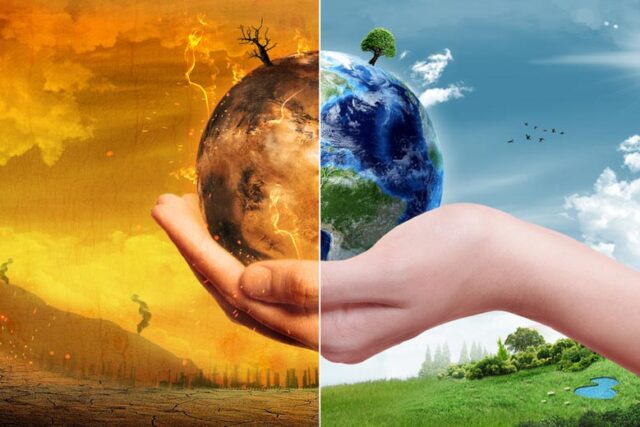The Year of Climate Change Jeopardy in GB 2022
Gilgit Baltistan, a northern part of Pakistan that share boundaries with China, India, and Afghanistan are blessed with a variety of eye-catching landscapes, alluring blue lakes, captivating flowing rivers, extended glaciers, and the towering peaks of Karakorum, Hindukush, and Himalayan mountain ranges.
Gilgit Baltistan is said to be having more than 7000 glaciers according to some local newspapers. The most prominent glaciers include the Batura glacier, Siachen glacier, and Hispar glacier which are the main sources of the rivers like Shiok River, Hunza river, Nagar river, Ghizer river, and Astore river. The rivers flow into the grand Indus which is thought to be the major source of water down the country. People in Gilgit Baltistan reside near these rivers and glaciers so that they can irrigate their fields and orchards for the reason that farming and agriculture remained their primary sources of income for them.
Climate Change is a global concern that is the biggest challenge in the past few years and the world is taking serious measures to counter this challenge.
Despite of these natural resources, the people of Gilgit Baltistan are more vulnerable to climate change. According to the journal of natural sciences of 2021, these glaciers are melting at a higher rate due to climate change. In another journal named “ Climate change and Himalayan glacier hazard,” these melting glaciers form glacial lakes which are almost 3000 in number and about one-third of them are considered to be the highest threat to the people living near the Himalayan lines. The rapid change in temperature has resulted in the faster melting of glaciers which turns to flash floods and glacial lake outbursts.
In the mass of challenges and problems, climate change hits the people of Gilgit Baltistan the most. 2022 remained the worst year in this regard as people here in Gilgit Baltistan suffered huge losses. Firstly, it was the month of May when flash floods hit the Hunza region and swept away bridges. The most prominent damage that was caused by climate change was in Hassanabad, a small village in Hunza situated near the famous Karakorum Highway when a huge GLOF washed away Hassanabad’s main bridge that was connecting Hunza with the rest of the country. Hunza remained cut off from the rest of the country for weeks. The flood not only destroyed the bridge but also destroyed agricultural lands, houses, water channels, and most importantly one of the most prominent electricity-producing power house in the region was also washed away. The tourism industry of the region remained badly disturbed and hence caused the loss of millions.
Later in July 2022, flash floods created chaos and havoc in the Ghizer district when they badly hit the Buber and Sherqilla villages respectively. As per reports from the locals, these floods claimed about 10 precious lives including women and children. These floods not only claimed human lives but also caused severe damage to the infrastructure. The water channels, agriculture fields, and fruit orchards were damaged which resulted in huge financial losses. The floods washed away the small settlements as well leaving behind hundreds of people homeless. In the same month, the reports state that the flash floods caused huge damage to irrigation channels, bridges, roads, and crop fields in the different areas of the Baltistan region as well.
What can we do?
Are we going to learn something from this climatically drastic year or going to forget it? Are we going to take some lessons to save our environment from 2022 or let it go as usual? 2022 has been an eye-opening and mind-altering year for us. It has now become a now-or-never situation for the local government, nongovernment organizations, and most importantly for the inhabitants of Gilgit Baltistan. The danger is not over yet. Climate change will hit us even harder in upcoming years, God forbid. The ill-planned infrastructure, high constructions, and deforestation are some key factors through which we “the inhabitants of this region” play our part in destroying our land. The climate change hazard is yet to come in the strongest way in the near future when thousands of trucks and containers in the name of CPEC will pass through. There will be the extensive emission of carbon dioxide and the situation will become worst from bad. It’s the time to act, if not now, it will be too late.
The government should urgently design programs to mitigate the risks of climate change, particularly in high-risk areas. It is also the responsibility of other organizations to launch reforestation programs to restore the green belt of the region to counter carbon emissions in the future. Only we can counter this challenge through planting trees, so we the inhabitants must plant trees as much as we can and spread awareness about the risks of climate change and also about the countering strategies for the purpose of saving our heavenly motherland for the next generations.








